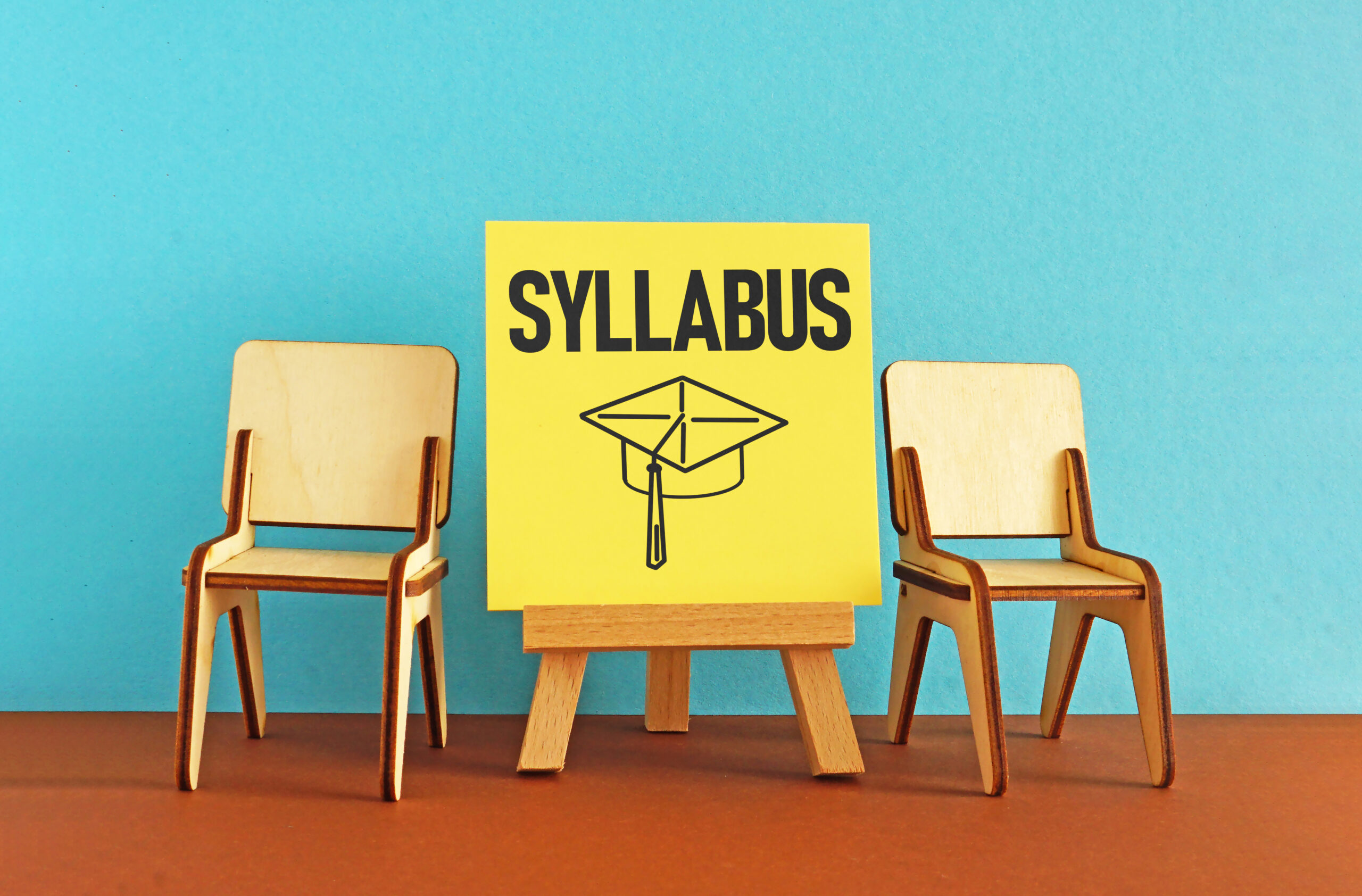It’s spring semester and a junior-level student just knocked on a professor’s office door. The student has dropped by to talk about summer internships; they’re considering a career in the faculty member’s discipline, but they feel nervous and a little unsure about navigating the internship hunt. They’ve come to the faculty member for insight, advice and a dash of encouragement that they’re on the right track.
A fall 2023 survey by the National Association for Colleges and Employers found 92 percent of faculty members have experienced this in the past year—a student in their disciplinary area asking for career advice. But only about half of instructors say they’re very comfortable advising students on careers in their discipline, showing a gap between lived experiences and preparation for navigating these interactions.
Career readiness is a growing undercurrent in higher education—driven in part by outside pressure from families and students to provide a return on investment for the high costs of tuition—but also pushed by an evolving job market and employers who attribute less weight to a college major or degree for early talent hiring.
With a fraction of students engaging with the career center on campus, delivering career development and professional skills to all students can seem like an impossible task.
Enter the career champion.
The career champion is a trained, often full-time, faculty member who has completed professional development that equipped them to guide students through higher education to their first (or even second) role.
The career champion identifies the enduring skills students will develop in their syllabus and provides opportunities for learners to articulate career readiness in the context of class projects, presentations or experiential learning.
The career champion also shepherds their peers along the career integration path, creating a discipleship of industry-cognizant professors who freely give internship advice, make networking connections and argue for the role of higher education in student development.
Over the past decade, college and university leaders have anointed and empowered champions among their faculty, and some institutions have even built layered models of train-the-trainer roles and responsibilities. The work creates a culture of academics who are engaged and responding to workforce demands, no longer shuffling students to career services for support but creating a through line of careers in the classroom.
The Recipe for Success
Career champion initiatives serve a three-pronged approach for institutional goals for career readiness.
First, such efforts provide much-needed professional development for the faculty member. NACE’s survey of faculty members found 38 percent of respondents said they need professional development in careers and career preparation to improve how they counsel students.
“Historically, faculty are not incentivized to do this work, nor are they trained to do anything really career readiness–related,” says Punita Bhansali, associate professor at Queensborough Community College and a CUNY Career Success Leadership Fellow. “This program was born out of the idea, let’s create a structured model where faculty get rewarded … they get recognized and they receive support for doing this work.”
Growing attention has been placed on the underpreparation of faculty to talk socio-emotional health with learners. In the same way, faculty are lacking the tools to talk about jobs and life after college. “As they’re thinking about careers in their own work, [faculty] are used to being experts in the field, and being an expert in careers feels daunting,” explains Brenna Gomez, director of career integration at Oregon State University.
Second, these programs get ahead of student questions about the value of liberal arts or their general education courses by identifying career skills in class early and often. This works in tandem with shifting general education requirements at some institutions, such as the University of Montana, which require faculty members to establish career as a learning outcome for courses.
“We knew we weren’t going to move [the] career-readiness needle by being the boutique program that you sometimes go to,” says Brian Reed, associate vice provost for student success at Montana. “If we really want to have an inescapable impact, we’ve gotta get into the classroom.”
A May 2024 Student Voice survey by Inside Higher Ed and Generation Lab found 92 percent of college students believe professors are at least partly responsible for some form of career development—such as sharing how careers in their field are evolving or helping students find internships—in the classroom. Just 8 percent of respondents selected “none of the above” in the list of career development–related tasks that faculty may be responsible for.
“It’s getting faculty on board with [and] being very clear about the skills that a student is developing that do have applicability beyond that one class and for their career and their life,” says Richard Hardy, associate dean for undergraduate education of the college of arts and sciences at Indiana University Bloomington. IU Bloomington’s College of Arts and Sciences also requires competencies in the curriculum.
Third, career champions are exceptionally valuable at changing the culture among their peers. “Champion” becomes a literal title when faculty interact with and influence colleagues.
“That’s a general best practice if you’re looking to develop faculty in any way: to figure out who your champions are to start, and then let faculty talk to faculty,” says Niesha Taylor, director of career readiness at the National Association of Colleges and Employers. “They have the same interests in hand, they speak the same language and they can really help each other get on board in a more authentic way than sometimes an administrator could,” adds Taylor, a former career champion for the City University of New York system.
Becoming an Expert
Each institution takes a slightly different approach to how they mint their faculty champions.
Oregon State University launched its Career Champion program in 2020 as part of a University Innovation Alliance project to better connect learners with career information in the classroom, explains Gomez.
The six-week program is led by the Career Development Center and runs every academic term, engaging a cohort of five to 15 faculty members and instructors who belong to various colleges and campuses at OSU. During one session and a few hours of work independently, program participants complete collaborative course redesign projects and education around inequities in career development.
By the end of the quarter, faculty have built three deliverables for their course: a NACE competency career map, a syllabus statement that includes at least one competency and a new or revamped lecture activity or assignment that highlights career skills.
After completing the program, professors can join a community of practice and receive a monthly newsletter from the career center to continuously engage in career education through research, events or resources for students.
IU Bloomington and Virginia Commonwealth University are among institutions that have created workshop series for faculty to identify or embed competencies in their courses, as well.
Training the Trainer
Creating change on the academic side of a college is a historically difficult task for an administrator, because it can be like leading a horse to water. Getting faculty engaged across campus is the goal, but starting with the existing cheerleaders is the first step, campus leaders say.
3 Tips for Launching Faculty Development
For institutions looking to create a champion program, or something similar, NACE’s Taylor encourages administrators to:
- Get leadership on board
- Make the professional development process meaningful through incentives or compensation
- Provide ways for professors to share their stories after completing the work.
To launch career champions at the University of Montana, Reed relied on the expertise and support of instructors who had previously demonstrated enthusiasm.
“We found our biggest champions who always come to the programs that we do, who traditionally invited us into the classroom. When we said, ‘Hey, you’ve been a fantastic partner. Would you want to be part of this inaugural cohort?’ they said, ‘Absolutely.’ And so that’s who we went with,” Reed says.
Montana’s faculty development in careers has expanded to have three tiers of involvement: a community of practice, career champions and Faculty Career Fellows, who Reed jokes are the Green Beret unit of careers. Fellows collaborate with a curriculum coach to research and implement additional events, training and other projects for instructors.
After completing the championship program, some returned to continue education and involvement, Reed says. “We had [faculty] that wanted to come back and do it again. They wanted to stay part of the community.”
The City University of New York selects a handful of Career Success Leadership Fellows annually who drive integration, innovation and research around careers across the system. In addition to training other faculty members, each fellow is charged taking the model to present and share with other campuses, as with their own projects for advancing career development growth.
With added time and energy comes an added institutional financial investment in career fellows. Montana’s fellows receive a $1,000 stipend for their work, drawn from funds donated by the Dennis and Phyllis Washington Foundation, and CUNY’s fellows receive $2,000 for the academic year.
The Heart Behind It All
For some of these engaged professors, their involvement is tied to their experiences as learners. That junior knocking on their office door asking about internships? That was them once upon a time, and they wished their professor had the answers.
“All of us have gone through undergrad. We know that we’ve taken some courses where it’s like, ‘Why did I take that?’ and the professor is just in their heads,” says Jason Hendrickson, professor of English at LaGuardia Community College, part of the CUNY system, and a Career Success Leadership Fellow.
“[Career champions] are the people who, when you talk to them, they all say, ‘I wish I had had this in my undergrad experience … I didn’t know this stuff existed, the depth of the programs and services that we offer,’” Reed says.
Faculty are also starting to feel the heat, particularly those belonging to disciplines under attack in mainstream media or that have historically less strong occupational outcomes for learners.
“I think over time, what’s happened is faculty have seen how this is actually beneficial … from the point of view of our disciplines and allowing students to see why engaging with the liberal arts is actually hugely beneficial for career and life,” IU Bloomington’s Hardy says.
“The question that keeps me up at night is how to retain college students,” says Bhansali of CUNY’s Queensborough Community College. “The data is bleak in terms of college retention, and each faculty needs to show how the content and skills covered in their classroom are going to help students in the future, regardless of the job they choose.”
Sometimes instructors can feel overwhelmed by the programs, trying to incorporate eight competencies into their courses, for example, or feeling as if they have to be an expert in all things career related.
“They can feel like, ‘How can I do all of this?’ And it’s really not any one faculty [member]’s job or any one class’s job. It has to be systemic in the college,” NACE’s Taylor says.
The best part of the job is seeing students successfully land that job in their field. Sebastian Alvarado, a biology faculty member at Queens College and CUNY Career Success Leadership Fellow, ran into former students from his genetics class at a specialist’s appointment he had.
“It feels really rewarding—they were really there as a result of their bio major training,” Alvarado says. “When we see students getting placements in their jobs, it feels like we’re doing what we’re supposed to do.”
Looking Ahead
There remain some faculty members who push back against careerism in higher education—and some who remain undersupported or -resourced to take on this work, Alvarado points out—but programs have been growing slowly but surely, driven in part by champions.
Since launching, IU Bloomington has had over 300 faculty complete the program in the College of Arts and Sciences, Hardy says.
Montana interacted with 235 faculty members in workshops and events in the past year, which Reed expects to only increase as more faculty members rework curriculum for general education requirements.
OSU has had 105 participants since 2020, and the College of Liberal Arts established a commitment to train at least two faculty members in each school to be Career Champions in their strategic plan for 2023–2028, Gomez says. Campus leaders are also creating professional development for academic advisers and student-employee supervisors to train other student-facing practitioners in career integration.
Furthering this work requires additional partnerships and collaboration between faculty members and career services staff, Taylor says, where traditionally there are not relationships due to institutional silos.
“I’m always—and my career success team, they’re always—scanning for these partnerships, and we use our network of existing people to sort of make referrals,” Reed says. “It’s a benevolent Ponzi scheme.”
We bet your colleague would like this article, too. Send them this link to subscribe to our weekday newsletter on Student Success.









